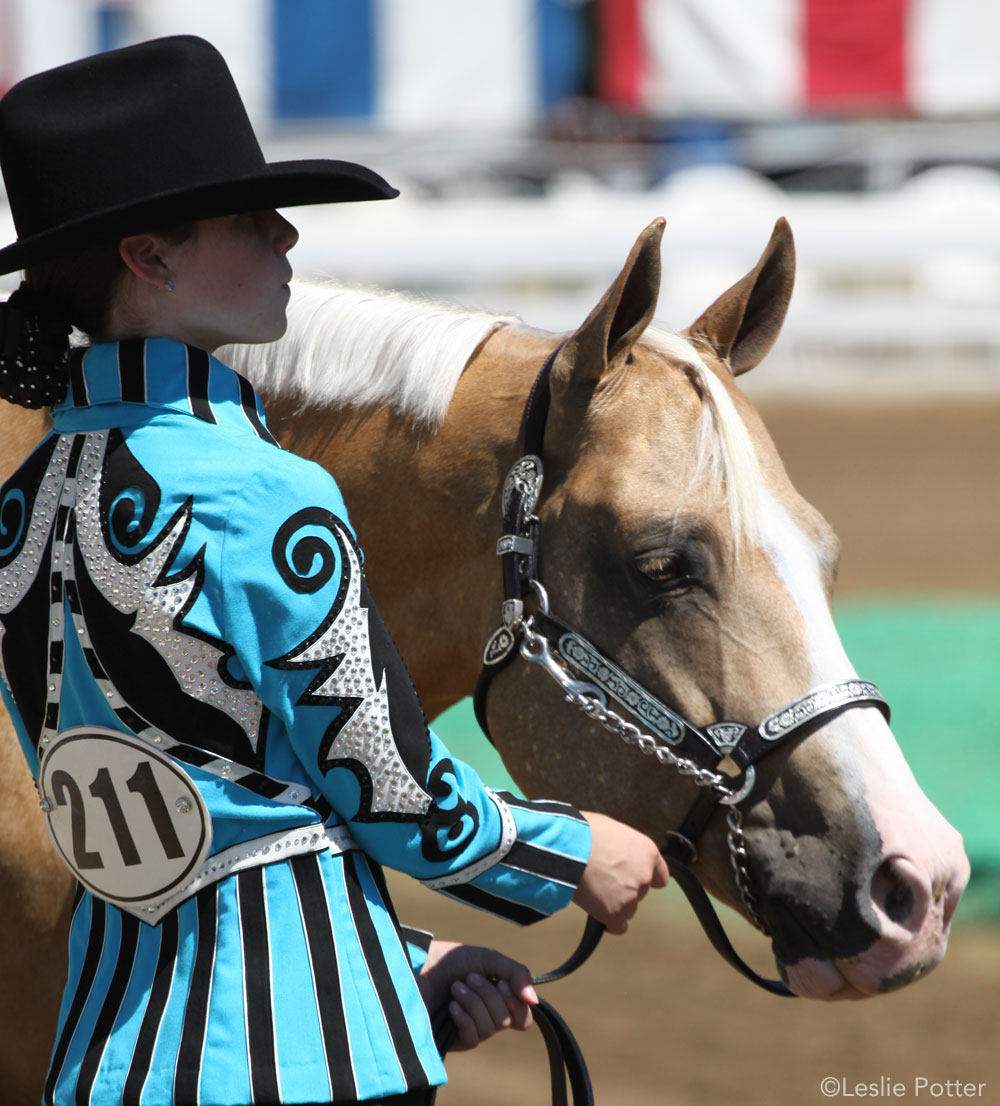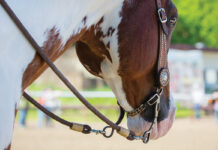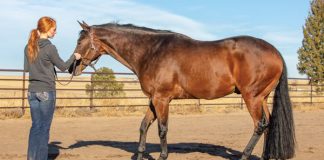 Showmanship class requires you and your horse to work as a team. While leading your horse through the pattern is important, the inspection is a major factor in placing. During the inspection, the judge evaluates your horse based on your ability to set him up and present him. Top horsewoman and approved breed judge Sharon Wellmann provides tips to master the setup and take home the win. Read on to learn more about a showmanship class setup and how to practice it.
Showmanship class requires you and your horse to work as a team. While leading your horse through the pattern is important, the inspection is a major factor in placing. During the inspection, the judge evaluates your horse based on your ability to set him up and present him. Top horsewoman and approved breed judge Sharon Wellmann provides tips to master the setup and take home the win. Read on to learn more about a showmanship class setup and how to practice it.

Well Equipped
First, know the rules and follow them when practicing and showing.
Showmanship is a class that’s all about presenting your horse and controlling him through the halter and lead shank, says Sharon.
Be sure that the halter fits the horse and the lead rope or shank is acceptable for the class.
1. Proper Position
The first step for a showmanship class setup is having the right position.
“Stand next to the horse with your right hand at the same height and close to where the chain comes out of the hardware of the noseband and chin strap of the halter,” says Sharon. “When your hand drops, it pulls the chain down and makes it hard for the horse to follow commands.”
Keep a slight bend in your right elbow, and your right arm slightly ahead of your left. Your left arm should be at your side, and bent at the elbow so that your forearm is parallel to the ground.
Stand with your shoulder at the horse’s throatlatch or slightly behind. Keep your eyes and chin up, stand up straight and keep your eyes forward.
2. Pull & Push
The second step for a showmanship class setup is to pull & push. Now that you’re standing in the right spot in the proper position, it’s time to ensure that your horse is listening.
Sharon says to start slow. Pull your horse forward a step or two, then push him back a step or two using the lead shank. Do this until he is responding to light pressure on the lead without you pulling or dragging him. Now, pull and push the horse side to side. Look for him to be light and ready to move. This is preparation for asking the horse to set up his feet square.
3. Setup in a Snap
The third step for a showmanship class is to set up your horse. Setting a horse up is more than simply squaring his feet. A horse is judged on presentation in showmanship, not conformation. But part of the presentation is knowing how to show off your horse to his best advantage. When practicing, set him up so his front and back legs are aligned in a balanced position directly underneath his body.
Start by walking forward and asking your horse to stop. Then, turn your body perpendicular to his, where the center of your chest is at the horse’s eye. Use the same cue from the push-pull exercise to ask him to move his feet.
“The goal is to have your horse’s front feet even and underneath the shoulder, and then have the back feet even and square under his hips,” says Sharon. “Be sure not to pull the front feet too far forward, where he appears stretched out.”
4. Ideal Inspection
The fourth step for a showmanship class setup is to prepare for the ideal inspection. The setup is the first part of the inspection. After the horse is set, you will look at the judge, and the judge will start to walk a circle around the horse. This is when you should move around the horse, showing him off for the judge.
“During inspection, we use the quarter method, dividing the horse into fourths,” Sharon explains. Picture a line from poll to tail and across the shoulders. When the judge is standing from the shoulders forward, you should stand on the opposite side of the horse. From the withers back, you should be positioned on the same side of the horse as the judge.
The reasoning is so that the judge can have a clear view of front portion of the horse, and stay safe around the side and back of the horse if the horse were to act up, says Sharon.
Slide your hand up and down the lead as you move from side to side. This keeps the horse from feeling pressure on the lead, and discourages him from moving forward.
Putting it All Together
Once you and your horse know how to perform the elements of a pattern—walk, trot, turn and setup—be sure to practice entire patterns. Showmanship judges reward handlers that show confidence in the ability of their horse, Sharon says.
She also reminds you that presentation is important in showmanship.
“The judges see you, your hat, clothing, the horse’s halter and cleanliness of your horse as you start the pattern. Make a good first impression. Then, responsiveness of the horse when executing the maneuvers—walk, trot, stop, setup, turns and inspection—is judged.”
Be ready with a smile and confidence in your horse!
This article originally appeared in the July/August 2017 issue of Young Rider magazine. Click here to subscribe!





